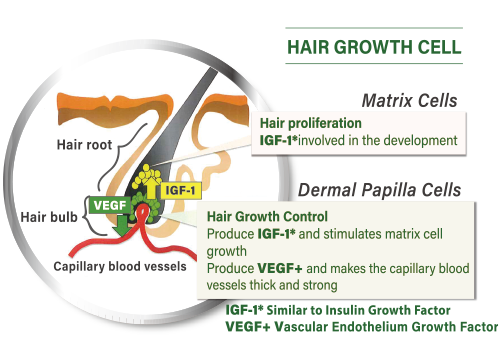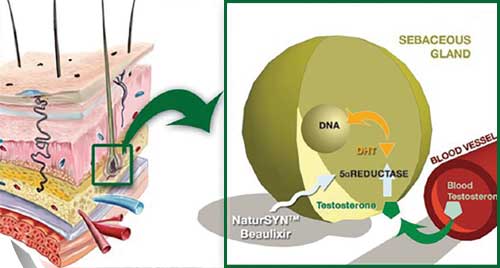Anti Hair Loss – Topical
Act Inside Out for Men
Home > Hair Loss Reasons for Women
The Difference
Females

Males

How To Combat Hair Loss At The Root
The hair bulb consists of keratinocytes dividing to form the hair shaft,
the inner sheath, and the outer root sheath.
The dermal papilla, at the base of the bulb, is considered the biological engine of the hair. Growth factors under the influence of the dermal papilla may have a crucial role in the growth and development of hair follicles. IGF1 proteins, responsible for hair bulb matrix formation, help stimulate keratinocytes, guide follicle development and control the hair cycle.
Thus to maintain healthy hair, it is necessary to increase the division rate of hair matrix cells and maintain hair in the anagen phase, and strengthen the attachment ability of the outer root sheath.
The key: Drug-Free supplements with hair growth boosting factors and healthy hair cycle maintenance support.
Women
Scalp hair lost each day
Percentage of women has thinned hair
Percentage of female hair loss results from hormonal changes, as in pregnancy or menopause
During menopause, 4 out of 10 women suffer from thinning hair